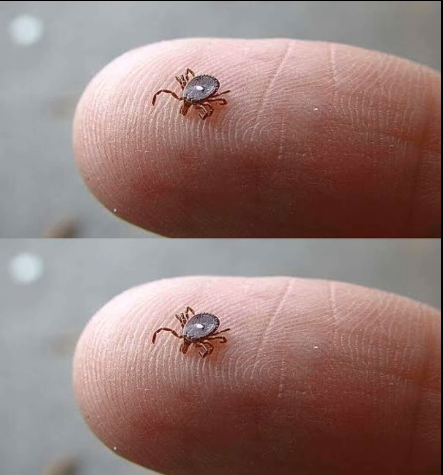Here are some helpful tips and tricks related to preventing, identifying, and managing tick encounters, inspired by the scenario you described:
Ticks are tiny, but their potential impact can be huge. Being proactive and informed is your best defense against these stealthy hitchhikers.
1. Know Your Enemy: Tick Identification & Behavior
Common Culprits: While the Lone Star tick (with its distinctive white dot on the female) is aggressive, the Blacklegged tick (deer tick) is notorious for transmitting Lyme disease. Familiarize yourself with the common ticks in your region. Online resources from your local health department or university extension offices are excellent guides.
Hunting Habits: Unlike passive ticks that wait to be brushed against, some, like the Lone Star, actively “hunt” their hosts. They can move surprisingly fast.
Where They Hide: Ticks don’t fly or jump. They typically cling to tall grasses, shrubs, and leaf litter, waiting for a host to pass by. They’re often found at the edge of wooded areas, in overgrown fields, and even in your own backyard if it borders natural spaces.

2. Fortify Your Yard: Prevention is Key
- Mow Regularly: Keep your lawn mowed short, especially around the edges where it meets wooded areas or tall grass.
- Clear Leaf Litter: Ticks love damp, shady environments. Remove leaf piles, brush, and yard debris.
- Create Barriers: Consider creating a 3-foot wide barrier of wood chips or gravel between your lawn and wooded areas to deter ticks from crossing.
- Strategic Planting: Avoid planting ground cover, tall grasses, or dense shrubs near high-traffic areas like patios or play spaces.
- Discourage Wildlife: While difficult, reducing deer, rodent, and other wildlife activity in your yard can help, as these animals often carry ticks.
3. Gear Up: Personal Protection
Dress Smart: When in tick-prone areas (even your backyard), wear long pants tucked into socks, and long-sleeved shirts. Light-colored clothing makes ticks easier to spot.
Repellents are Your Friend:
DEET: Products containing DEET (20-30%) are highly effective for skin.
Permethrin: Treat clothing, boots, and gear with permethrin. Do not apply permethrin directly to skin. It remains effective through several washes.
Natural Alternatives: Some essential oils (like lemon eucalyptus) can offer limited protection, but generally aren’t as effective as DEET or permethrin.
Check Yourself (and Pets!) Thoroughly:
The “Tick Check” Routine: After spending time outdoors, perform a full-body tick check. Pay close attention to:
- Hair and scalp
- Ears (especially behind them)
- Neck and shoulders
- Armpits
- Groin area
- Behind knees
- Inside the belly button
Shower Smart: Showering within two hours of coming indoors can help wash off unattached ticks.
Pet Patrol: Check your pets daily, especially after they’ve been in tall grass or wooded areas. Consult your vet about tick prevention products for them.
4. The Unwelcome Guest: Safe Removal
- Tools: Use fine-tipped tweezers. Avoid using bare hands, petroleum jelly, heat, or nail polish, as these can irritate the tick and cause it to regurgitate contents into the bite wound.
- Technique: Grasp the tick as close to the skin’s surface as possible. Pull upward with steady, even pressure. Do not twist or jerk.
- After Removal: Clean the bite area and your hands with rubbing alcohol or soap and water.
- Save the Tick (Optional but Recommended): Place the tick in a sealed bag or container with a blade of grass. You can send it to a lab for testing if symptoms develop, which can help guide diagnosis.
5. Post-Bite Vigilance: What to Watch For
- Mark Your Calendar: Note the date and location of the bite.
- Watch for Symptoms: Monitor the bite area and your overall health for several weeks.
- Rash: Look for a bullseye rash (Erythema migrans) which can appear days or weeks after a bite, often not at the bite site itself. It can be warm to the touch and expand over time.
- Flu-like Symptoms: Fever, chills, headache, fatigue, muscle aches, and swollen lymph nodes can all indicate a tick-borne illness.
- Seek Medical Attention: If you develop any of these symptoms after a tick bite, contact your doctor immediately. Early diagnosis and treatment are crucial for preventing long-term complications. Be sure to mention the tick bite.
Remember, a tick encounter doesn’t automatically mean illness, but vigilance and prompt action are your best allies in protecting yourself and your loved ones.
Beta feature


